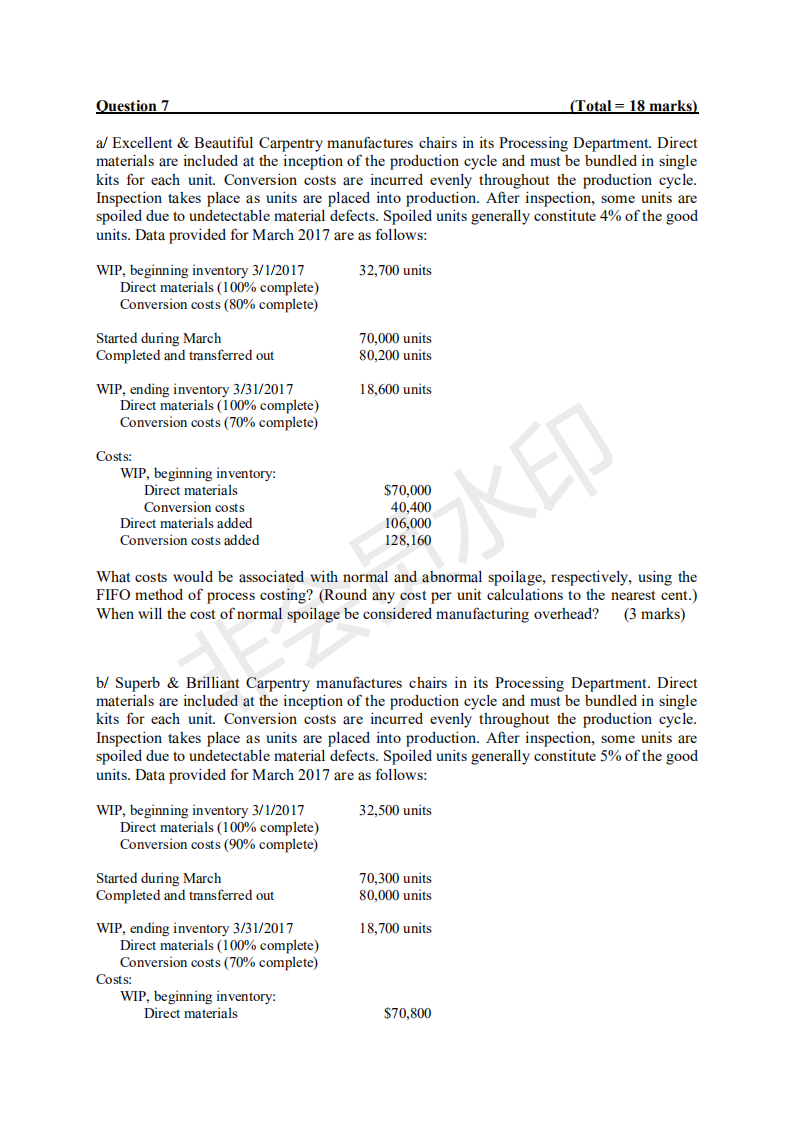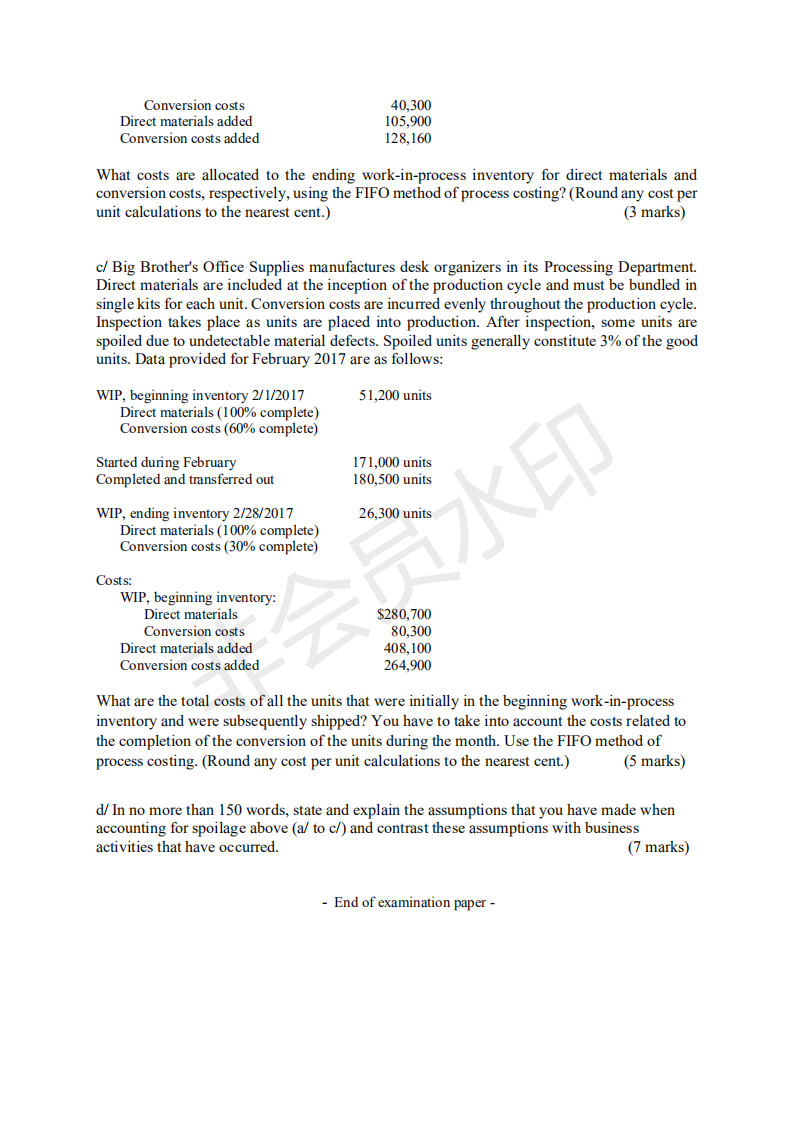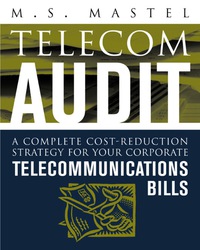

Question 7 (Total = 18 marks) a/ Excellent & Beautiful Carpentry manufactures chairs in its Processing Department. Direct materials are included at the inception of the production cycle and must be bundled in single kits for each unit. Conversion costs are incurred evenly throughout the production cycle. Inspection takes place as units are placed into production. After inspection, some units are spoiled due to undetectable material defects. Spoiled units generally constitute 4% of the good units. Data provided for March 2017 are as follows: 32,700 units WIP, beginning inventory 3/1/2017 Direct materials (100% complete) Conversion costs (80% complete) Started during March Completed and transferred out 70,000 units 80,200 units 18,600 units WIP, ending inventory 3/31/2017 Direct materials (100% complete) Conversion costs (70% complete) Costs: WIP, beginning inventory: Direct materials Conversion costs Direct materials added Conversion costs added $70,000 40,400 106,000 128,160 ZKEJ What costs would be associated with normal and abnormal spoilage, respectively, using the FIFO method of process costing? (Round any cost per unit calculations to the nearest cent.) When will the cost of normal spoilage be considered manufacturing overhead? (3 marks) b/ Superb & Brilliant Carpentry manufactures chairs in its Processing Department. Direct materials are included at the inception of the production cycle and must be bundled in single kits for each unit. Conversion costs are incurred evenly throughout the production cycle. Inspection takes place as units are placed into production. After inspection, some units are spoiled due to undetectable material defects. Spoiled units generally constitute 5% of the good units. Data provided for March 2017 are as follows: 32,500 units WIP, beginning inventory 3/1/2017 Direct materials (100% complete) Conversion costs (90% complete) Started during March Completed and transferred out 70,300 units 80,000 units 18,700 units WIP, ending inventory 3/31/2017 Direct materials (100% complete) Conversion costs (70% complete) Costs: WIP, beginning inventory: Direct materials $70,800 Conversion costs Direct materials added Conversion costs added 40,300 105,900 128,160 What costs are allocated to the ending work-in-process inventory for direct materials and conversion costs, respectively, using the FIFO method of process costing? (Round any cost per unit calculations to the nearest cent.) (3 marks) c/ Big Brother's Office Supplies manufactures desk organizers in its Processing Department. Direct materials are included at the inception of the production cycle and must be bundled in single kits for each unit. Conversion costs are incurred evenly throughout the production cycle. Inspection takes place as units are placed into production. After inspection, some units are spoiled due to undetectable material defects. Spoiled units generally constitute 3% of the good units. Data provided for February 2017 are as follows: 51,200 units WIP, beginning inventory 2/1/2017 Direct materials (100% complete) Conversion costs (60% complete) Started during February Completed and transferred out 171,000 un 180,500 units 26,300 units WIP, ending inventory 2/28/2017 Direct materials (100% complete) Conversion costs (30% complete) SKED Costs: WIP, beginning inventory: Direct materials Conversion costs Direct materials added Conversion costs added $280,700 80,300 408,100 264,900 What are the total costs of all the units that were initially in the beginning work-in-process inventory and were subsequently shipped? You have to take into account the costs related to the completion of the conversion of the units during the month. Use the FIFO method of process costing. (Round any cost per unit calculations to the nearest cent.) (5 marks) d/ In no more than 150 words, state and explain the assumptions that you have made when accounting for spoilage above (a/ to c/) and contrast these assumptions with business activities that have occurred. (7 marks) - End of examination paper - Question 7 (Total = 18 marks) a/ Excellent & Beautiful Carpentry manufactures chairs in its Processing Department. Direct materials are included at the inception of the production cycle and must be bundled in single kits for each unit. Conversion costs are incurred evenly throughout the production cycle. Inspection takes place as units are placed into production. After inspection, some units are spoiled due to undetectable material defects. Spoiled units generally constitute 4% of the good units. Data provided for March 2017 are as follows: 32,700 units WIP, beginning inventory 3/1/2017 Direct materials (100% complete) Conversion costs (80% complete) Started during March Completed and transferred out 70,000 units 80,200 units 18,600 units WIP, ending inventory 3/31/2017 Direct materials (100% complete) Conversion costs (70% complete) Costs: WIP, beginning inventory: Direct materials Conversion costs Direct materials added Conversion costs added $70,000 40,400 106,000 128,160 ZKEJ What costs would be associated with normal and abnormal spoilage, respectively, using the FIFO method of process costing? (Round any cost per unit calculations to the nearest cent.) When will the cost of normal spoilage be considered manufacturing overhead? (3 marks) b/ Superb & Brilliant Carpentry manufactures chairs in its Processing Department. Direct materials are included at the inception of the production cycle and must be bundled in single kits for each unit. Conversion costs are incurred evenly throughout the production cycle. Inspection takes place as units are placed into production. After inspection, some units are spoiled due to undetectable material defects. Spoiled units generally constitute 5% of the good units. Data provided for March 2017 are as follows: 32,500 units WIP, beginning inventory 3/1/2017 Direct materials (100% complete) Conversion costs (90% complete) Started during March Completed and transferred out 70,300 units 80,000 units 18,700 units WIP, ending inventory 3/31/2017 Direct materials (100% complete) Conversion costs (70% complete) Costs: WIP, beginning inventory: Direct materials $70,800 Conversion costs Direct materials added Conversion costs added 40,300 105,900 128,160 What costs are allocated to the ending work-in-process inventory for direct materials and conversion costs, respectively, using the FIFO method of process costing? (Round any cost per unit calculations to the nearest cent.) (3 marks) c/ Big Brother's Office Supplies manufactures desk organizers in its Processing Department. Direct materials are included at the inception of the production cycle and must be bundled in single kits for each unit. Conversion costs are incurred evenly throughout the production cycle. Inspection takes place as units are placed into production. After inspection, some units are spoiled due to undetectable material defects. Spoiled units generally constitute 3% of the good units. Data provided for February 2017 are as follows: 51,200 units WIP, beginning inventory 2/1/2017 Direct materials (100% complete) Conversion costs (60% complete) Started during February Completed and transferred out 171,000 un 180,500 units 26,300 units WIP, ending inventory 2/28/2017 Direct materials (100% complete) Conversion costs (30% complete) SKED Costs: WIP, beginning inventory: Direct materials Conversion costs Direct materials added Conversion costs added $280,700 80,300 408,100 264,900 What are the total costs of all the units that were initially in the beginning work-in-process inventory and were subsequently shipped? You have to take into account the costs related to the completion of the conversion of the units during the month. Use the FIFO method of process costing. (Round any cost per unit calculations to the nearest cent.) (5 marks) d/ In no more than 150 words, state and explain the assumptions that you have made when accounting for spoilage above (a/ to c/) and contrast these assumptions with business activities that have occurred. (7 marks) - End of examination paper








